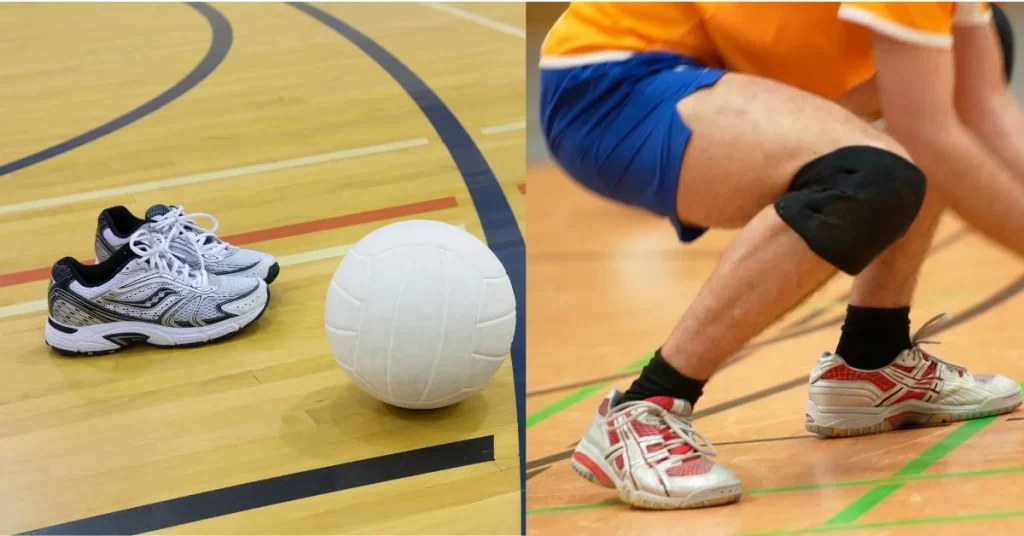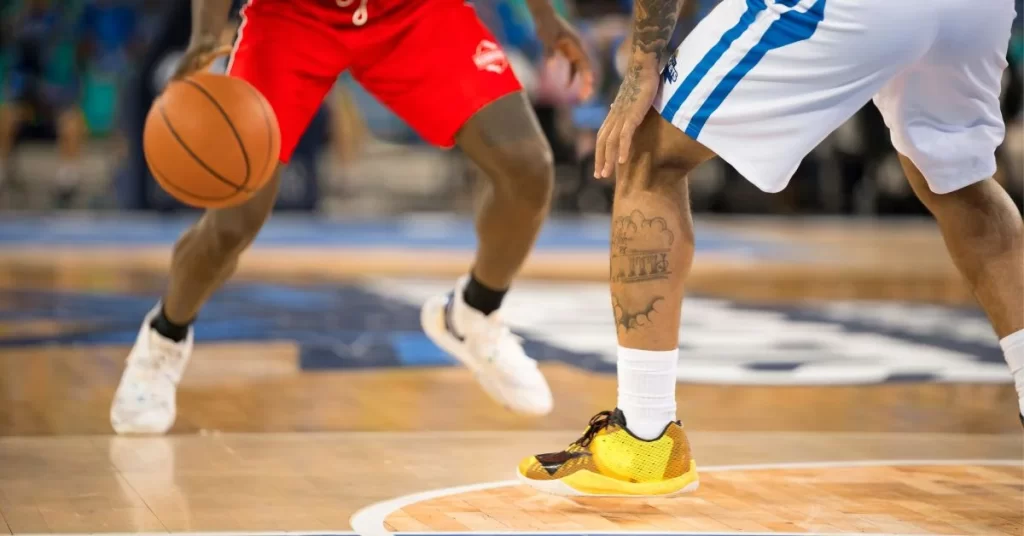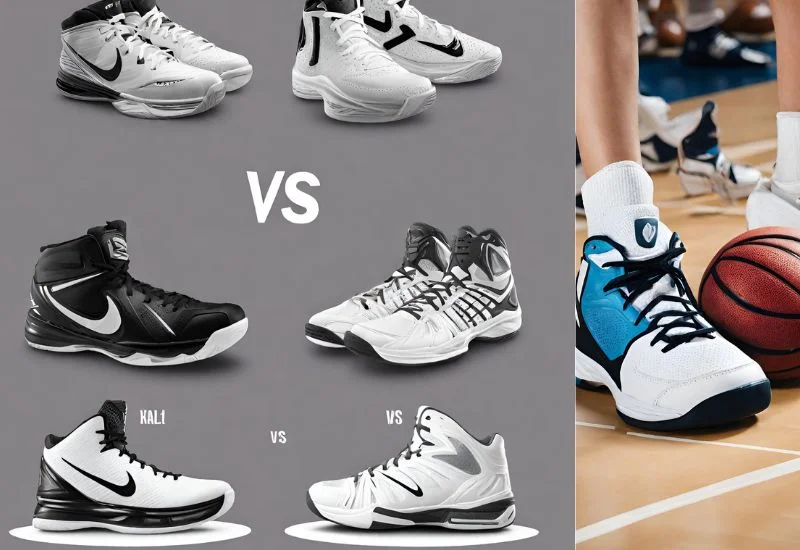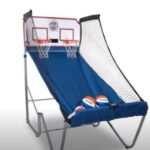Introduction to Volleyball Shoes vs Basketball
Volleyball Shoes vs Basketball may seem similar at first glance, but there are key differences that cater to the specific demands of each sport. Understanding these distinctions is crucial for athletes looking to optimize their performance on the court.
From design elements to material composition, volleyball shoes, and basketball shoes are tailored to provide the necessary support, stability, and traction required for the unique movements and actions in their respective sports.
In this article, we will explore the distinguishing features of volleyball shoes and basketball shoes to shed light on how they differ in functionality and design.
Key Features of Volleyball Shoes

- Lightweight and flexible design to support quick movements on the court.
- Enhanced cushioning in the forefront to absorb shock during jumps and dives.
- Improved traction for better grip on indoor court surfaces.
- Low to the ground sole for stability and balance during lateral movements.
- Breathable materials to keep feet cool and dry during intense gameplay.
Key Features of Basketball Shoes

High-Top Design: Basketball shoes typically feature a high-top design that provides ankle support and helps prevent injuries during quick lateral movements·
- Cushioning: These shoes are equipped with ample cushioning in the midsole to absorb impact and provide comfort during jumps and landings on the basketball court.
- Durable Outsole: Basketball shoes have a durable outsole with a herringbone pattern that offers excellent traction for quick cuts and sudden stops on the court.
- Supportive Upper: The upper of basketball shoes is designed to provide stability and support for the foot during dynamic movements like pivoting, jumping, and running.
- Breathability: Many basketball shoes feature breathable materials to help keep the feet cool and comfortable during intense games or practices.
Design Differences
Outsole: Volleyball shoes typically feature gum rubber outsoles for better traction on indoor surfaces, while basketball shoes have durable rubber outsoles designed for both indoor and outdoor courts.
Upper: Basketball shoes often have higher collars and more ankle support, while volleyball shoes typically offer a low-top design for better mobility.
Cushioning: Volleyball shoes prioritize responsive cushioning for quick movements and jumps, whereas basketball shoes may have more cushioning for impact protection during jumps and landings.
Breathability: Volleyball shoes usually have breathable mesh uppers to keep feet cool during intense matches, while basketball shoes may feature additional padding for ankle support and stability.
Design Elements: Basketball shoes often come in vibrant colorways and unique designs, reflecting the sport’s culture, while volleyball shoes tend to have more subtle color options with a focus on performance features.
Performance Differences
Traction: Volleyball shoes focus on providing maximum grip on indoor courts to enable quick movements and sudden stops essential in volleyball· Basketball shoes, on the other hand, offer multidirectional traction suitable for the constant changes in direction on the court.
Cushioning: Volleyball shoes prioritize cushioning in the forefoot area for frequent jumps while basketball shoes have cushioning throughout the sole to support the constant running and jumping in basketball.
Support: Volleyball shoes feature ankle support to aid landing after jumps and basketball shoes offer overall foot and ankle support to handle explosive movements on the court.
Breathability: Both types of shoes have breathable materials, but volleyball shoes may have more ventilation to keep feet cool during intense matches.
Price
Volleyball shoes and basketball shoes can vary in price depending on the brand, model, and features. Generally, basketball shoes are more expensive due to their thicker construction, cushioning, and durability. Volleyball shoes are usually less expensive due to their lighter weight and simpler design.
Durability
Due to the high-impact movements in basketball, basketball shoes are designed to be more durable than volleyball shoes. They often feature reinforced materials in high-wear areas like the toe and heel, along with additional cushioning and support. Volleyball shoes, on the other hand, may have a softer lifespan due to their lightweight construction.
When it comes to cushioning, volleyball shoes feature a lightweight and responsive system for quick and explosive movements. In contrast, basketball shoes have a thicker and more protective cushioning system, ideal for absorbing the impact of high jumps and hard landings.
Support
Both volleyball and basketball shoes offer excellent ankle support to prevent injuries. Volleyball shoes have a low-cut design for greater range of motion and flexibility, while basketball shoes have a higher cut for added protection and stability.
Weight
Volleyball shoes are lightweight and flexible, allowing for quick movements and fast reactions on the court. On the other hand, basketball shoes are heavier and more durable, providing additional support and protection during high-impact movements.
Style
Volleyball shoes have a sleek and streamlined design for speed and agility, while basketball shoes have a bulkier and rugged look for maximum support and durability.
Flexibility
Volleyball shoes are highly flexible, enabling quick changes of direction and fast movements on the court. They have a lightweight upper and a flexible sole to promote natural foot movement. In contrast, basketball shoes are less flexible due to their thicker sole and higher cut, restricting ankle movement.
Conclusion
Each sport demands specific shoe features to optimize performance. Volleyball shoes prioritize stability and cushioning for quick lateral movements and jumps. Basketball shoes focus on ankle support and impact protection for frequent running and jumping. Understanding these differences helps athletes choose the right footwear for their sport. Proper footwear enhances agility, prevents injuries, and ultimately improves overall game performance.
Ultimately, the best choice between Volleyball Shoes vs Basketball Shoes depends on your specific needs and preferences as an athlete. If you prioritize lightweight and responsive shoes for quick movements, volleyball shoes may be the ideal choice. On the other hand, if you require maximum support and protection during high-impact movements, basketball shoes could be the better option
Can I wear basketball shoes for volleyball?
While it’s technically possible to wear basketball shoes for volleyball, it’s not recommended due to several key differences:
Weight: Basketball shoes are heavier and bulkier, hindering the quick movements and agility needed in volleyball.
Cushioning: Basketball shoes prioritize cushioning throughout the sole for high jumps, while volleyball shoes focus on forefoot cushioning for jumps and dives.
Traction: Volleyball shoes offer better grip on indoor court surfaces, while basketball shoes are designed for both indoor and outdoor courts, sacrificing some grip for multi-directional movement.
Ankle support: While both offer support, volleyball shoes tend to be lower-cut for flexibility, while basketball shoes have a higher cut for added ankle protection which can restrict movement in volleyball.
Can I wear volleyball shoes for basketball?
Similarly, while technically possible, wearing volleyball shoes for basketball is not ideal:
Support: Volleyball shoes offer less overall support, especially around the ankles, which can be risky for high-impact movements and quick changes of direction in basketball.
Cushioning: Volleyball shoes lack the thicker cushioning found in basketball shoes, which can impact impact absorption during jumps and landings.
Durability: Volleyball shoes may not hold up to the wear and tear of frequent basketball play due to their lighter construction.
What are the key differences in material between the two types of shoes?
Outsole: Volleyball shoes use gum rubber for better traction on indoor courts, while basketball shoes have more durable rubber for both indoor and outdoor use.
Upper: Volleyball shoes often have lighter, more breathable mesh uppers, while basketball shoes might have additional padding and support elements in the upper.
How does the price differ between volleyball and basketball shoes?
Generally, basketball shoes tend to be more expensive than volleyball shoes due to their thicker construction, cushioning, and durability. However, prices can vary depending on brand, model, and features.
Which type of shoe is more breathable?
Both types of shoes utilize breathable materials, but volleyball shoes often prioritize ventilation with mesh uppers to keep feet cool during intense matches. Basketball shoes may sacrifice some breathability for additional padding and support.
Which is more expensive, volleyball or basketball shoes?
Generally, basketball shoes are more expensive due to their more complex construction, thicker cushioning, and increased durability. However, prices can vary depending on brands, models, and specific features.
Which shoe is more durable?
Basketball shoes are typically designed to be more durable than volleyball shoes due to the higher impact nature of the sport. They often include reinforced materials and additional support to withstand the demands of basketball.
Which type of shoe is lighter?
Volleyball shoes are significantly lighter than basketball shoes due to their simpler design and focus on agility.
Looking for More articles on Indoor Activities? Visit our Website www.indoorgem.com






